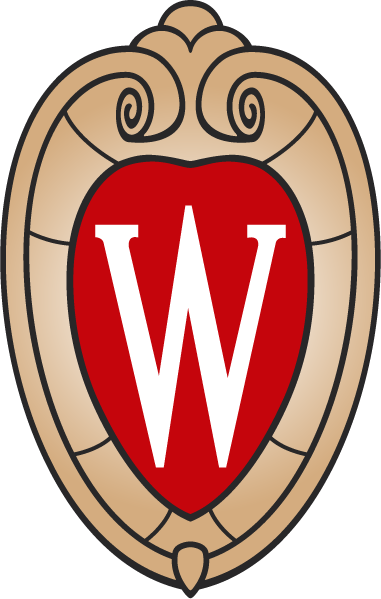
Structural Provisions in the Building Code and Referenced Standards
interpro.wisc.edu/RA00621 See upcoming datesCourse Overview
Gain a solid grasp of structural design loads, including wind, seismic, and environmental forces, alongside advanced materials like steel, aluminum, wood, concrete, and masonry. Explore significant updates to the IBC structural provisions while learning to assess load criteria, inspection requirements, and foundational systems. Through real-world case studies and practical discussions, you'll acquire the skills to ensure accurate design and regulatory compliance in every project.
Learning Outcomes
- Interpret and apply structural load requirements including wind, seismic, snow, and flood loads.
- Navigate and implement structural provisions from IBC, ASCE 7, AISC, ACI, and TMS standards.
- Evaluate inspection, foundation, and material design requirements for code-compliant construction.
Who Should Attend?
- Civil and structural engineers involved in design or plan review.
- Architects, code officials, and plans examiners working with structural systems.
- Project managers, construction professionals, and subcontractors responsible for code compliance.
Course Outline
Day One
Welcome and Student Introductions
Structural Design Loads
- Reference documents
- Dead loads
- Live loads
- Snow loads
- Wind loads
- Soil lateral loads
- Rain Loads
- Flood Loads
- Earthquake Loads
- Ice Loads
- Load Combinations
Steel and Aluminum
- Reference documents
- Structural steel
- Composite structural steel and concrete structures
- Steel joists
- Cold formed steel
- Aluminum
Background of the Codes
- History of building codes
- Codes and standards
- Scope
Significant Changes to the Structural Provisions - 2018 and 2021 IBC
- Structural design – general
- Structural design – live loads
- Structural design – environmental loads
- Special inspections and tests
- Materials
Day Two
Wood Design
- Material
- Definitions
- Code requirements
- Diaphragms
- Shear walls
- Segmented shear wall design
- Anchorage
- Useful resources
Special Inspections
- Special inspection
- Major players
- Structural special inspection
- Submittal documents and structural observation
Soils and Foundations
- Reference documents
- Types of foundation systems
- ACI 318-14 – Chapter 3 – Foundations
- IBC 2015 – Chapter 18 – Soils and Foundations
- Footing design example
Concrete
- Reference documents
- Types of concrete construction
- Materials
- Flexural design basics
- IBC 2015 – Chapter 19 – Concrete
- ACI 318-14 – Building code requirements for structural concrete
- Examples
Masonry
- Reference documents
- Materials
- Types of construction / nomenclature
- Flexural design basics – ASD (Allowable Stress Design)
- IBC 2015 – Chapter 21 – Masonry
- Building code requirements for masonry structures – TMS 402-13 / ACI 530-13 / ASCE 5-13
- Specifications for masonry structures – TMS 602-13 / ACI 530.1-13 / ASCE 6-13
- Shear wall design example
Testimonials
"Very informative, learned about parts and aspects of the code that I was not familiar with before this presentation. Will be taking advantage of the things I learned from this week in my practice."
— Kevin, Briohn Design Group, Brookfield, Wisconsin
"Wanted to become familiar with U.S. codes and standards and truly feel that I have a better understanding of them now."
— Adinda, Blattner Energy, Inc., Avon, Minnesota
"It was a good review. It's always helpful to hear another designer talk about their philosophy of what 'usually' governs or is more efficient."
— Nathan, Moment Engineering, Middleton, Wisconsin
Instructors
Sandra Hyde
Sandra Hyde, P.E. is the Managing Director of Product Development with the International Code Council (ICC) where, as part of the Product Development team, she develops technical resource materials in support of the structural provisions of the International Codes. Her role also includes review and technical editing of publications authored by ICC and engineering associations, and the presentation of technical seminars on the IRC and IBC structural provisions. Prior to joining ICC in 2010, Sandra worked in manufacturing and research engineered wood products. She is a Registered Civil Engineer in Idaho and California.
Mahmoud Maamouri
Mahmoud Maamouri, PhD, PE has been employed at Computerized Structural Design, S.C. (CSD) since 1998. He became an Associate in 2001 and a Principal in 2007. His responsibilities include the design of specialty equipment supports, enclosures and their anchorages when subjected to seismic, wind and sloshing effects. In addition, he is responsible for the analysis, design and review of precast / pre-stressed concrete buildings and components. He specializes in both structural and architectural concrete design, and is also responsible for review of steel space frame specialty structures. In addition, Dr. Maamouri is an adjunct professor at the Milwaukee School of Engineering where he teaches pre-stressed concrete, wood and masonry design. Dr. Maamouri is a registered Professional and Structural Engineer in 20 States. He is a member of ACI, PCI and AISC, and currently serves as chairman for the ACI 348 Committee on Structural Safety and Reliability.
Mark Malkin
Mark P. Malkin, PE, is a program director in the Office of Interdisciplinary Professional Programs in the College of Engineering at UW-Madison. He is a registered Professional Engineer with over 25 years of experience in university facilities project management and HVAC systems design. His course offerings include HVAC, plumbing and fire protection fundamentals, building code reviews, and design and operation of science labs, data centers, museums and libraries. Mark received his bachelor's in Mechanical Engineering from Cornell University, and his MS in Mechanical Engineering from UW–Madison.
Michael Kempfert
Michael Kempfert, P.E., is a vice president of CSD Structural Engineers where he has over 20 years of experience with a primary focus on steel connection design and steel design of industrial facilities and nonbuilding structures. He received his Bachelor of Science in Architectural Engineering and Masters of Science in Structural Engineering from Milwaukee School of Engineering where he is also an adjunct professor. He also serves as a member on the AISC Manual Committee.
Take this course when it’s offered next!
